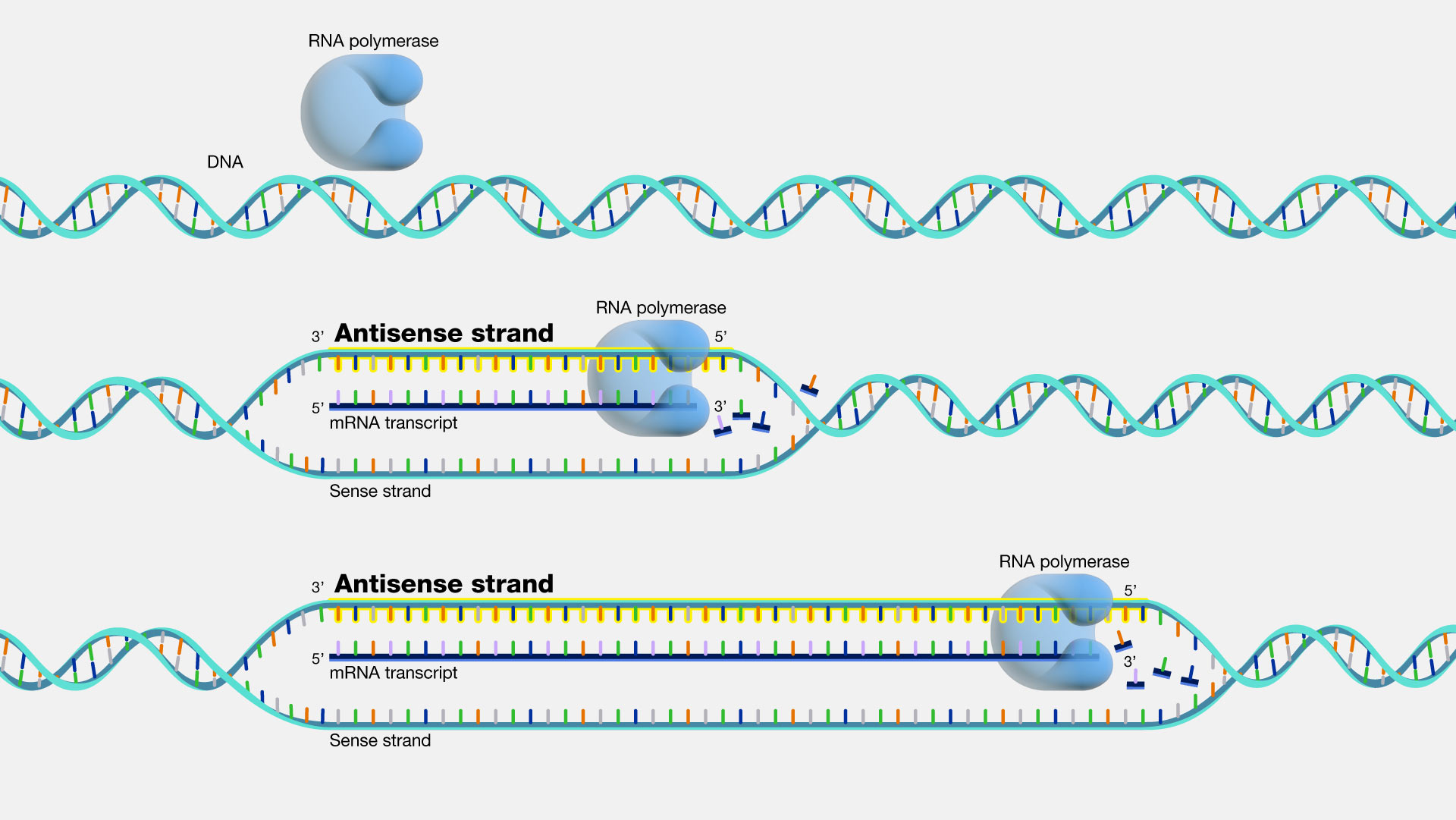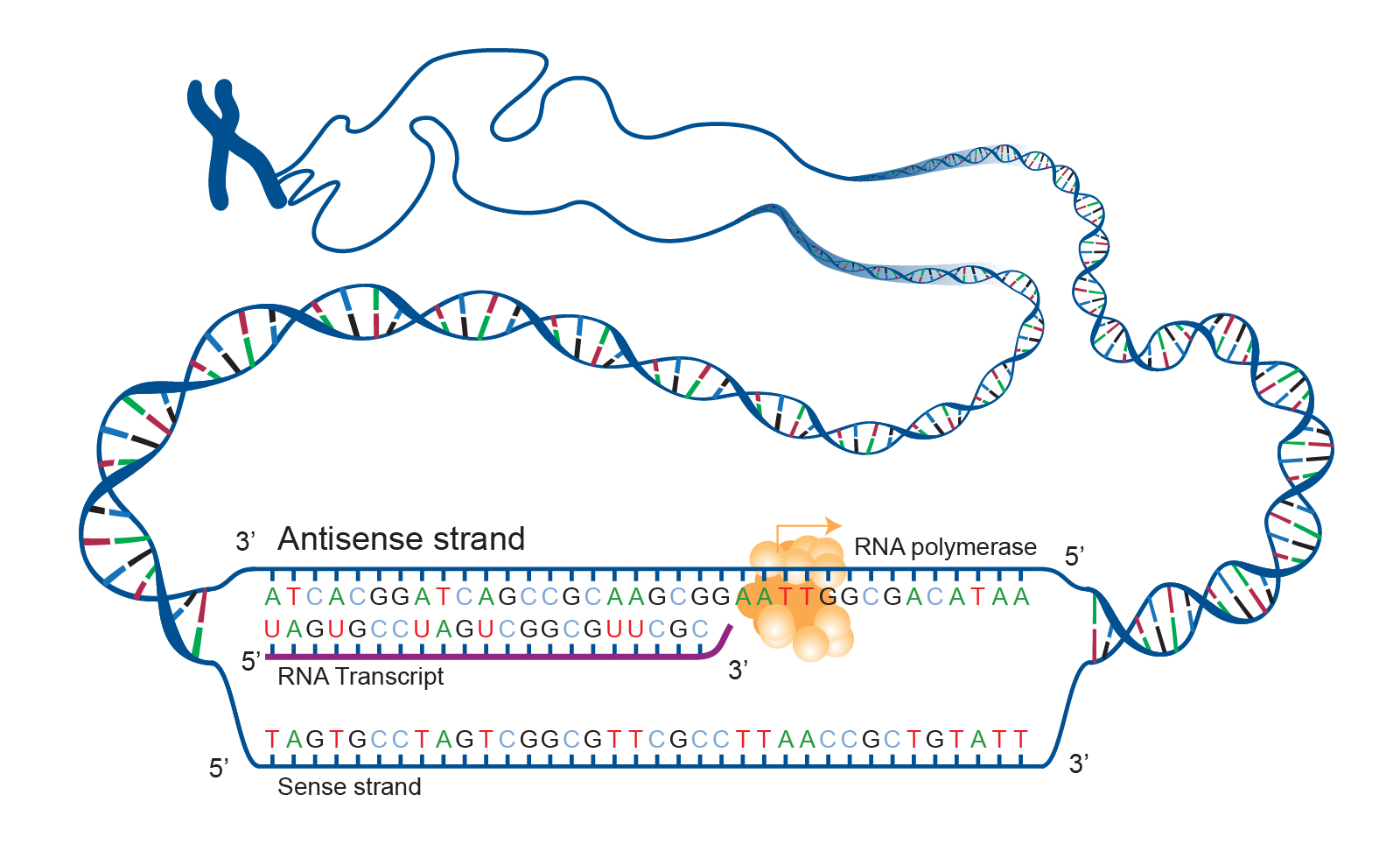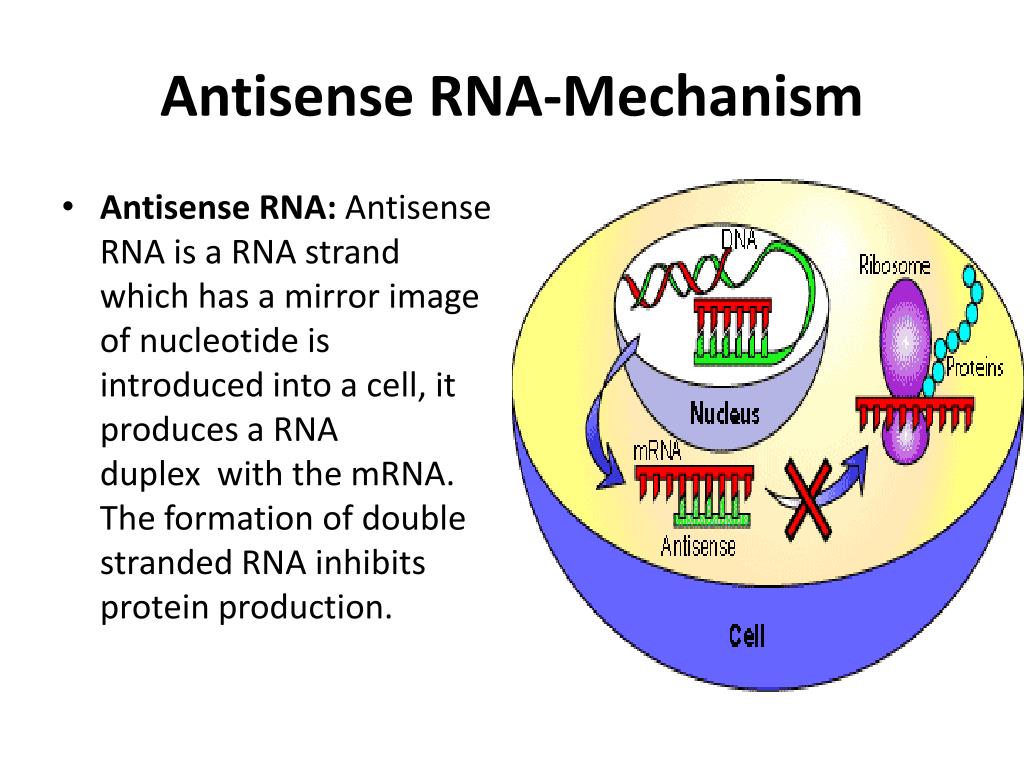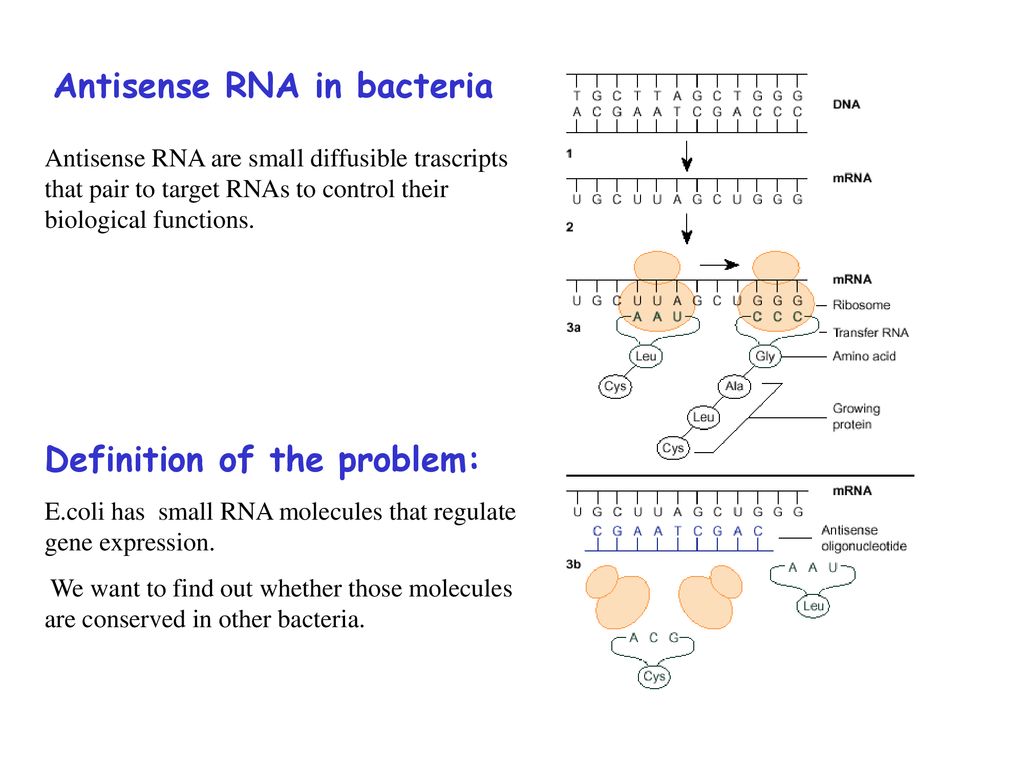Antisense Rna Does Which Of The Following

Antisense RNA, a naturally occurring molecule with the power to selectively silence genes, is increasingly recognized as a key player in diverse biological processes and a promising tool for therapeutic interventions.
But what exactly does antisense RNA do? This seemingly simple question has complex answers, ranging from regulating bacterial physiology to offering potential treatments for human diseases. Understanding its functions is crucial for appreciating its significance in both fundamental research and clinical applications.
The Core Function: Gene Silencing
At its heart, antisense RNA functions as a gene silencer. It achieves this by binding to a specific messenger RNA (mRNA) molecule, the intermediary between a gene's DNA code and the protein it encodes. This binding event interferes with the mRNA's ability to be translated into a protein.
Several mechanisms are employed in this silencing process. Some antisense RNAs physically block the ribosome, the cellular machinery responsible for protein synthesis, from attaching to the mRNA. Others trigger the degradation of the mRNA molecule, effectively destroying the blueprint for the protein.
Still others can influence splicing, which changes how the mRNA is assembled.
In Bacteria: A Regulatory Maestro
Bacteria utilize antisense RNA extensively for regulating a variety of cellular functions. These include stress responses, nutrient uptake, and virulence.
For example, E. coli uses antisense RNA to control the expression of outer membrane proteins in response to environmental changes. This regulatory mechanism allows the bacteria to adapt to different conditions and survive in diverse environments.
Furthermore, antisense RNA plays a crucial role in plasmid maintenance, ensuring that plasmids are stably inherited during cell division.
In Eukaryotes: A More Complex Picture
The role of antisense RNA in eukaryotes, organisms with more complex cellular structures including humans, is more intricate. Eukaryotic genomes often contain naturally occurring antisense transcripts, their precise functions are still under investigation.
However, research suggests that antisense RNA in eukaryotes can influence gene expression at multiple levels. This includes regulating transcription, mRNA processing, and translation.
Some antisense RNAs have been shown to play a role in developmental processes, such as cell differentiation and tissue formation.
Therapeutic Potential: A New Frontier
The ability of antisense RNA to specifically silence genes has made it an attractive therapeutic tool. Antisense oligonucleotides (ASOs), synthetic versions of antisense RNA, are being developed and tested for the treatment of various diseases.
ASOs are designed to target specific mRNA molecules involved in disease processes. By binding to these mRNAs, ASOs can prevent the production of harmful proteins or correct aberrant gene expression.
Several ASOs have already been approved by the FDA for the treatment of diseases such as spinal muscular atrophy (SMA) and Duchenne muscular dystrophy (DMD).
Spinraza, for example, is an ASO that modifies the splicing of the SMN2 gene, increasing the production of functional SMN protein in patients with SMA. This addresses the genetic defect and reduces symptoms.
Challenges and Future Directions
While the therapeutic potential of antisense RNA is immense, several challenges remain. Delivering ASOs effectively to target tissues and cells is a major hurdle.
Off-target effects, where ASOs unintentionally bind to other mRNA molecules, are another concern. Researchers are working to improve the specificity and delivery of ASOs to minimize these issues.
The development of new ASO chemistries and delivery strategies is a promising area of research. Nanoparticles, for instance, are being explored as vehicles for delivering ASOs to specific cells and tissues.
Another research direction involves using antisense RNA to modulate the immune system. The work being done to harness its potential for treating autoimmune diseases and cancer continues to expand.
Conclusion
Antisense RNA is not just a gene silencer; it is a versatile regulatory molecule with diverse functions in both prokaryotic and eukaryotic organisms. Its ability to specifically target and silence genes has opened up new avenues for therapeutic intervention.
While challenges remain, the ongoing research and development in this field holds immense promise for treating a wide range of diseases. The understanding of antisense RNA's mechanisms and applications will undoubtedly continue to grow in the years to come.
This will hopefully leading to new and innovative therapies that improve human health.



+strand+is+transcribed%2C+while+the+other+(sense)+strand+remains+inactive..jpg)














